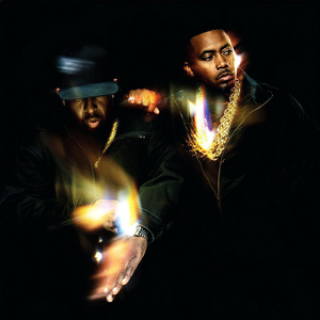Advertisement
In last month’s article, I made the statement that the Electric Guitar is one of only two true American instruments, the other being the Sousaphone. Of all of the dumb things that I have said in print over the years, this one may have generated the most outrage. I was inundated with messages proposing (at times aggressively) other instrument candidates for Americanesedness. So to preserve my hard-won reputation for keeping an open mind, I have determined to explore the suggested candidates and rate them on a scale of 1-5 Bald Eagles.
To define American instruments, we must first define what “American” means. Primarily to save space, I have decided to use the Drunk Republican Uncle on the Fourth of July definition: the original 13 states after George III got the heave-ho and the other states upon their admission to the Unionas states. That is, if Wyatt Earp invented a new type of trombone while U.S. Marshall for New Mexico Territory in 1878 he's out of luck.
Without further ado, the candidates (in no particular order):
Five String Banjo. The Banjo, conceptually strings over a drum head, is an instrument of African origin which achieved its modern form in the Caribbean in the 17th century. The American version includes a 5th “drone” string attached a third of the way up the neck, which was allegedly added by some dude named Joel Sweeny in the early 1800s. Examples of earlier afro/carribean banjos with drone strings, however, have apparently been identified. Verdict: 2-4 Bald Eagles, depending on who you ask.
Solid-Body Electric Guitar. Hey, what would we get if we took the neck of this gorgeous hollow-body instrument and attached it to a plank? The coolest thing ever, apparently. Verdict: 5 Bald Eagles.
Sousaphone. Basically a Tuba designed for marching bands. Works just like a tuba, except you can walk around with it and it doesn’t sound as good. If you’ve seen “Drumline,” though, you will understand a solid 4 Bald Eagles.
Moog Synthesizer. Loosely, a synthesizer is any device which converts electronic signals to sound through an amplification apparatus. Although generally known as the first synthesizer, the Moog is actually the first analog synthesizer to make use of transistor technology instead of the cumbersome, vacuum tubes used by earlier versions like the German Trautonium and the American Audion Piano described below. Verdict: 3 Bald Eagles, for being less of a pain in the ass to move around.
Audion Piano. This 1915 instrument, invented by genius/possible stock fraud Lee DeForrest, appears to actually be the first analog synth. Looks like it weighs 50,000 lbs. and requires a flat-bed truck to move, but still 5 Bald Eagles.
Dulcimer. Based on the European Zither, the Dulcimer was purportedly created by hardy Appalachianites who did not possess the technical skill to build violins. I learned to play one at summer camp when I was 13, and found it exceptionally tedious – it also looks like something used to serve rolls at a German restaurant. Verdict: who cares?
Jaw-Harp (AKA Jew’s Harp, Ozark Harp etc.). That weird thing that people put in their mouths and strum to make it sound like you’re in a swamp. I am baffled by the lobbying for its inclusion, as a 10 second search of Wikipedia reveals that it is one of the oldest musical instruments in the world and that it can be seen in 4th century B.C.E. Chinese drawings. Verdict: 0 bald eagles.
Pedal Steel Guitar. Rather embarrassing that I didn’t come up with this one earlier. Not the first steel guitar (indigenous Hawaiian), or the first electric guitar, but the slide combined with the pedal and knee controls are a brand new operating system for a unique sound. Verdict: 5 Bald Eagles.
Chapman Stick/Warr Guitar. I had no idea such things existed, but these are electric guitars designed to be “tapped” with both hands instead of being fretted and strummed. All-American, I guess, but gets docked for being rather esoteric. Verdict: 2 Bald Eagles.
Kazoo. Not a “serious” instrument, but hey, Jimi Hendrix played one on “Crosstown Traffic,” so at least 2 Bald Eagles should be in order.
Steam Calliope. Steam boiler power forcing air through 25-67 whistles in a rolling wagon which can be heard for miles? Verdict: oh hell yes, 5 Bald Eagles.
Auto-harp. Not actually a harp, but instead (like the Dulcimer nobody cares about) is a form of the Zither. Favored by musicians who love pointing out that June Carter Cash played one, enjoy hour-long tuning sessions, and/or wish to resemble a TIE Fighter on stage. There is a widespread believe amongst crazed Americana folklorists that it was invented by a German immigrant named Charles Zimmerman in 1882. Sadly, it was actually invented by one Charles August Gutter in Markneukirchen, Germany, and Zimmerman just snuck over here and patented Gutter’s design. What a dick. 0 Bald Eagles.
Dulcitar. Oh god, now they are just making shit up…



